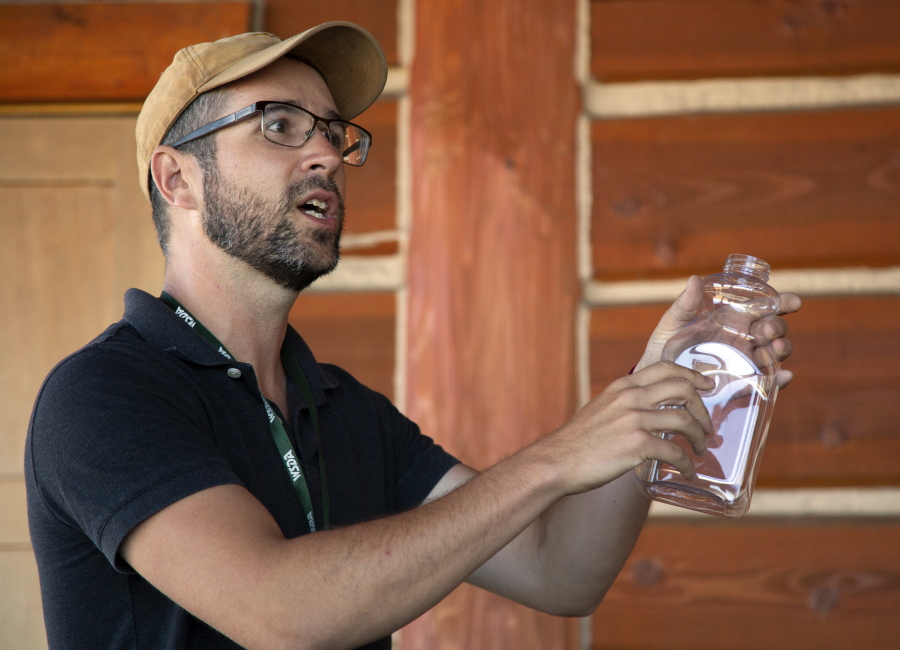BLAINE — Gov. Jay Inslee, concerned about the impact of Asian giant hornets on the state’s agriculture, attended a Washington State Department of Agriculture staff field training day about the capture and eradication of so-called “murder hornets.”
“It’s something you can be impressed about, but also understand their danger to the whole state,” Inslee said in an interview with The Bellingham Herald on Tuesday at Birch Bay State Park.
“If you like pears, peaches or apples, you want to really make sure (giant Asian hornets) don’t come here permanently to the state of Washington.”
The hornets were first found in Washington near Blaine in 2020.
Up to 2 inches long, the Asian giant hornet, or Vespa mandarinia, is the world’s largest hornet species. They are identifiable by their large yellow/orange heads. The hornets are known for their painful stings.
They will attack people and pets when threatened. People should be extremely cautious near them, state agriculture officials have said, and those who have allergic reactions to bee or wasp stings should never approach an Asian giant hornet.
The invasive hornets are feared for the threat they pose to honeybees and, by extension, the valuable crops in Washington state that the bees pollinate.
Following a presentation on the methods used for tracking and trapping the hornets, the governor discussed the importance of the work, calling the employees “heroes” and the work they do “like science fiction.”
Washington State Department of Agriculture staff use live traps to detect the presence of giant Asian hornets in an area. Then, once captured, the hornets are outfitted with small tracking tags with the hope that they will lead trappers back to a nest.
Four nests have been removed in the past two years by officials on the team. Tuesday they demonstrated removing a nest with a vacuum.
The hornets are then used in research tracking the genetics of giant Asian hornet populations, or in the testing of more effective forms of bait.
However, you don’t need special equipment or bait to capture giant Asian hornets. Washington State Department of Agriculture has started two programs allowing citizens to participate in the eradication of giant Asian hornets.
One program asks citizens to create traps and log their location. The traps are cheaply made, consisting of a plastic bottle with holes cut in the sides and a mix of rice wine and orange juice to lure in the hornets.
Another program asks citizens to adopt a paper wasp nest, where interested volunteers can submit a weekly report of the nest.



